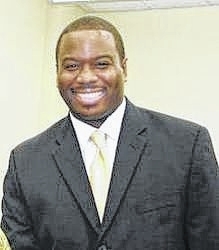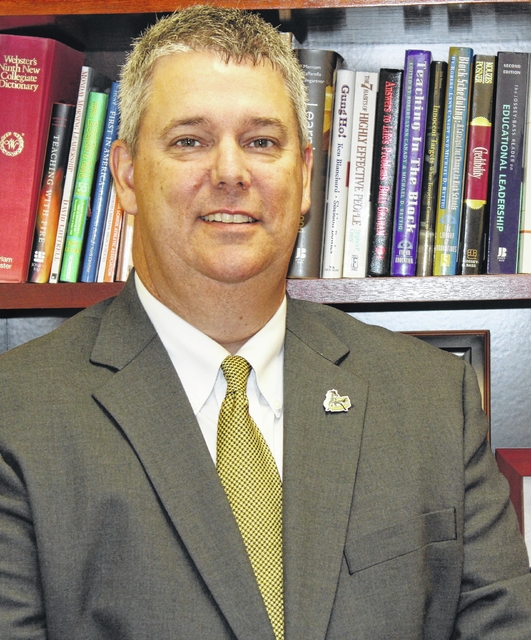Local school systems are thriving but doing so while dipping into savings accounts, a necessary evil with diminishing resources at the state and federal level amid increased mandates. Even with local allotments rising to offset expenses, Clinton City Schools and Sampson County Schools have been forced to spend at least $6 million in fund balance in recent years.
SCS superintendent Dr. Eric Bracy and CCS superintendent Stuart Blount spoke to the issue during a recent meeting, noting that their respective systems were doing their best to reduce reliance on fund balance to cover expenses — salaries and benefits in many cases.
In 2011-12, fund balance for Sampson County Schools totaled roughly $3.87 million. That dipped to just under $3 million in 2012-13 and again to $1.8 million in 2013-14. At the end of 2014-15, that number totaled a shade over $1.3 million.
Bracy said the issue now is about getting “financially healthy.” That means giving priority to programs and services directly impacting students, as well as auditing all programs and eliminating the under-performing ones.
“We’re probably going to have to increase class sizes unless we get more money than we were anticipating. We will try as much as we can to manage the loss of positions through attrition,” said Bracy, citing eight teaching, two and a half clerical and three teachers assistant positions reduced for 2015-16. “We’re reducing our personnel to try to help our financial situation, keeping in mind we still have to educate our kids.”
Blount said the city schools are facing the same obstacle and also eyeing an increase in class sizes as a result. The city has had to eliminate 11 teacher and teaching assistant positions over the past three years.
“We’re trying to maintain a happy balance knowing that tough decisions have to be made at tough times,” Blount said. “We’ve taken that head on and tried to be very strategic.”
Federal funds to the city schools have decreased each year, from $3.6 million in 2011-12 to $2.15 million in 2014-15. State money has been sporadic, but experienced an uptick for 2014-15. Likewise, low wealth allotments for the county schools alone declined from approximately $5.1 million in 2011-12 to $4.52 million in 2014-15 before a slight uptick to about $4.6 million for 2015-16.
Local money has really made the difference, superintendents said.
The local funding amount approved by the Sampson Board of Commissioners has increased from $830 per student in 2011-12 to $930 per student in 2015-16. The state average for 2014-15 was $1,630 per student. Bracy and Blount thanked the board for its support, which they conceded has been needed now more than ever.
Even with that local boost, Clinton City Schools, like the county system, has appropriated roughly $3.5 million in fund balance over the past five years, leaving the total amount remaining at $2.1 million as of this past June.
“In 2013-14, we had to make some serious decisions. We had to appropriate $1.3 million of our fund balance,” said Blount. “We know we don’t have another $1.3 million to burn out of the savings account to balance our budget.”
He pointed to areas where savings have already been realized, including a grass cutting contract that has meant $200,000 in savings over two and a half years, as well as significant savings in driver’s education, Blazing Stars after-school program and technology services. That is a continuing effort going forward.
“We’ve already jumped into some of the target areas where we believe we can outsource and save,” Blount noted, saying just $500,000 of fund balance has been appropriated each of the past two years “with the goal and the understanding we would try to save and shave off of items so we don’t spend that.”
Bracy said similar measures are being taken by the county system.
“To make sure we’re being as efficient as we can be, we’re reviewing all contracts within our school system looking for savings and reviewing all expenditures to make sure we’re taking full advantage of our resources and possible savings,” said Bracy. “We want to get out of the business of relying on our fund balance to balance our budget.”
The school leaders said that tumbling fund balances are a worry, a downward trend they want to see halted.
“That always worries me,” said Bracy. “That’s like our savings accounts and it’s continually decreasing.”
The superintendent noted a few hundred thousand dollars of federal funding lost over last year’s total as well. He said that he is all for bonuses for local teachers, noting that the funds for that come out of the local system’s current expense, the same pool from which children must be educated. At the same time, less pay means teachers could opt to go elsewhere. It can be a bad cycle, especially with lessening state and federal support, Bracy said.
He said teachers have rolled up their sleeves and worked hard, even through funding uncertainty. Blount agreed.
Blount said that graduation rate and student scholarships awarded have risen each year from 2011-12 to 2014-15 despite a funding upheaval that has seen less federal money put into city schools. The graduation rate rose from 81.9 percent to 89.5 percent in the time, during which the scholarship amount spiked from $1.2 million to $3.56 million.
“We’re extremely proud of our graduation rate and the student scholarships awarded,” Blount said. Schools have maximized their efforts with limited funds and resources, a testament to teachers and administrators and the students themselves, he stated.
“I’m troubled with the state,” Commissioner Albert Kirby during the recent session. “They have us in a tough position. Looking at the fund balance, it’s just bleeding.”
He dismissed any thoughts of waste, noting fund balance was being used to operate the schools.
“That is troubling to me,” Kirby asserted, noting the reduction of lottery monies for school construction years ago, something never restored. “That’s disturbing to me. We can’t tax the local population … to cover something that the state promised us anyway.”
The superintendents said it is particularly tough to reward hard-working teachers during an ongoing budget crunch.
“We want our teachers to be very highly compensated. They are talented and do a good job, and I think we can agree our teachers in North Carolina are not paid anywhere near where they should be paid,” said Bracy. “We’re certainly losing candidates to Virginia, South Carolina and other states as well.”
It is a matter that will continue to receive attention, especially with fluctuating outside funding streams.
“I don’t want to fuss at Raleigh too much because that’s the hand that feeds us,” said Kirby, “but it’s difficult when you see the pattern of fund balances being used to run the system.”


